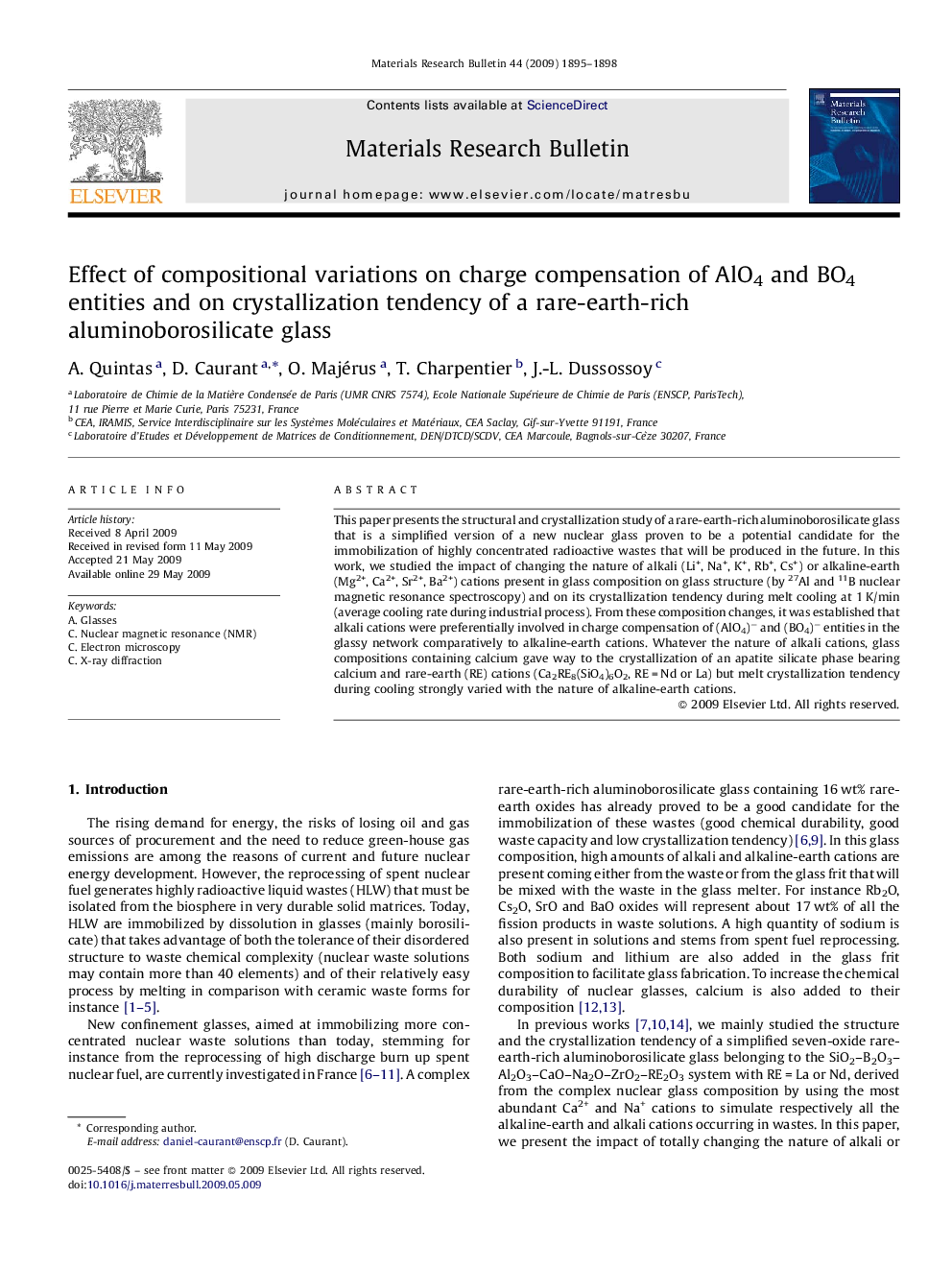| Article ID | Journal | Published Year | Pages | File Type |
|---|---|---|---|---|
| 1491000 | Materials Research Bulletin | 2009 | 4 Pages |
This paper presents the structural and crystallization study of a rare-earth-rich aluminoborosilicate glass that is a simplified version of a new nuclear glass proven to be a potential candidate for the immobilization of highly concentrated radioactive wastes that will be produced in the future. In this work, we studied the impact of changing the nature of alkali (Li+, Na+, K+, Rb+, Cs+) or alkaline-earth (Mg2+, Ca2+, Sr2+, Ba2+) cations present in glass composition on glass structure (by 27Al and 11B nuclear magnetic resonance spectroscopy) and on its crystallization tendency during melt cooling at 1 K/min (average cooling rate during industrial process). From these composition changes, it was established that alkali cations were preferentially involved in charge compensation of (AlO4)− and (BO4)− entities in the glassy network comparatively to alkaline-earth cations. Whatever the nature of alkali cations, glass compositions containing calcium gave way to the crystallization of an apatite silicate phase bearing calcium and rare-earth (RE) cations (Ca2RE8(SiO4)6O2, RE = Nd or La) but melt crystallization tendency during cooling strongly varied with the nature of alkaline-earth cations.
